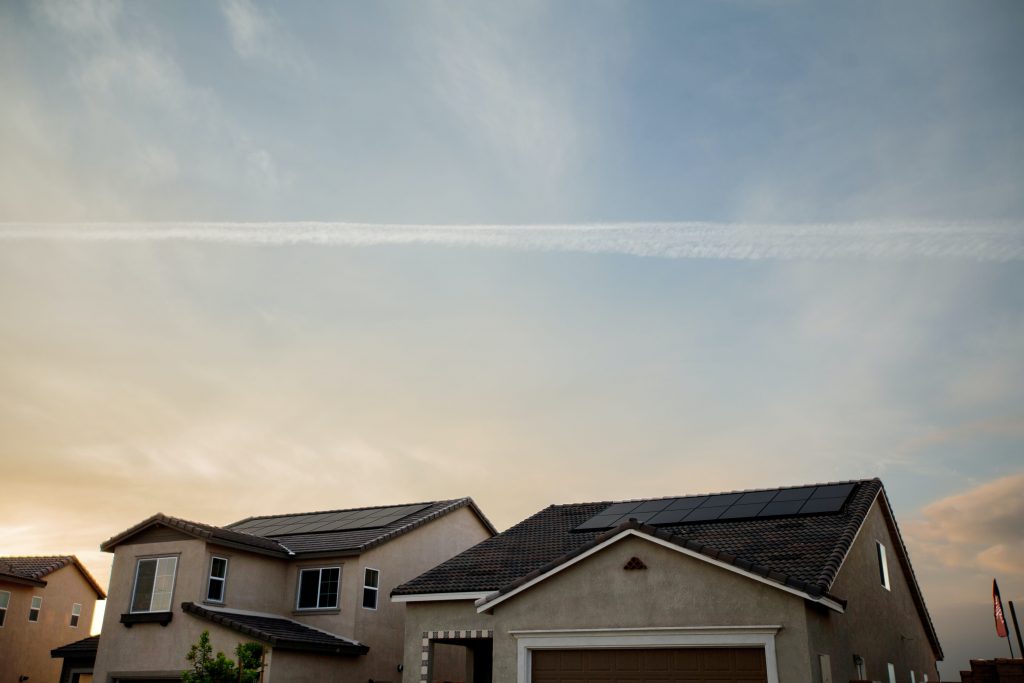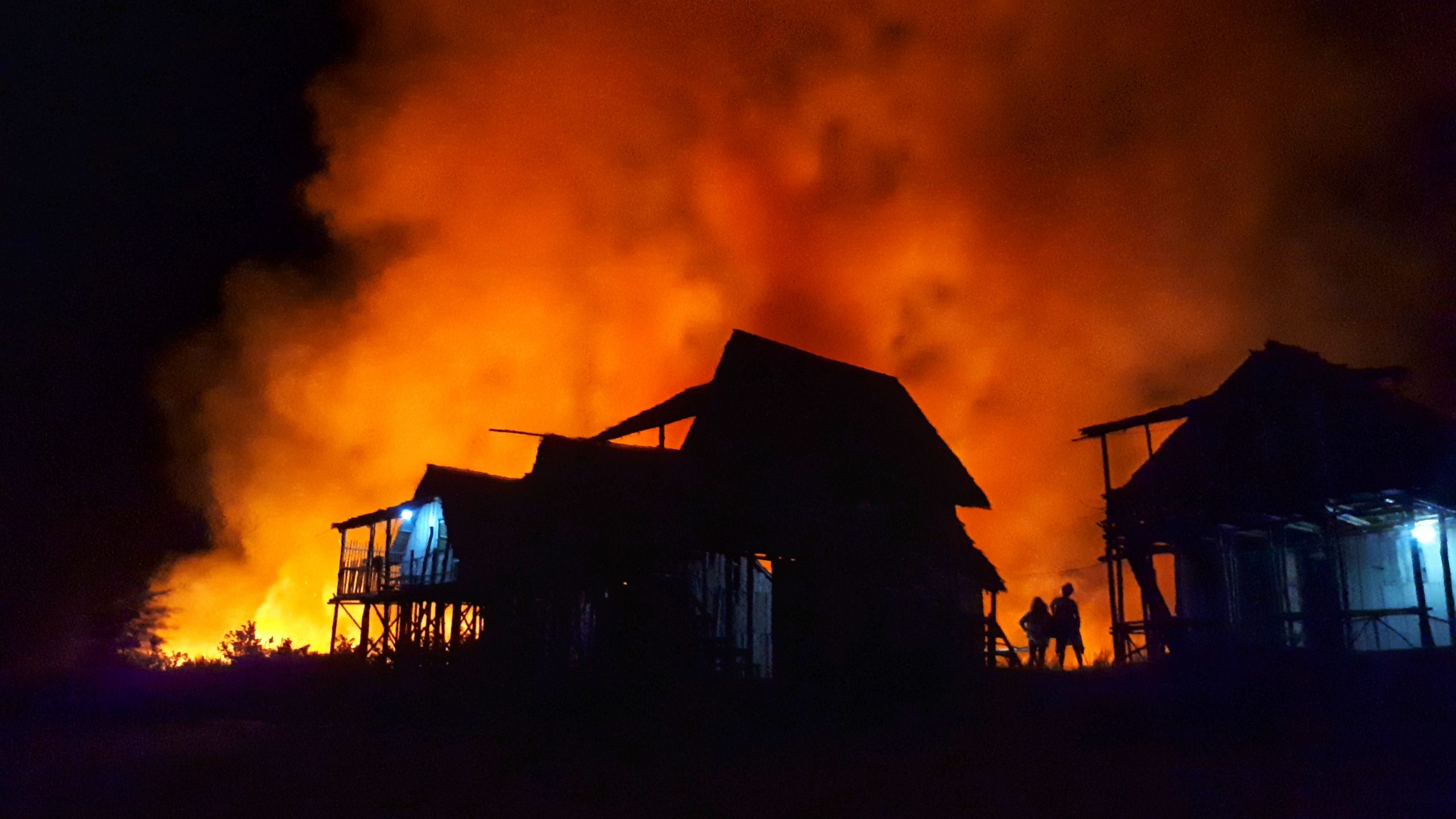How To Fireproof Your Home
March 17, 2022
House fires occur 346,800 times every year in America according to the National Fire Protection Association. It’s no secret that fires can easily be destructive and harmful. A bad fire can destroy your entire house and everything inside or worse, hurt someone. If you’re worried about a house fire breaking out, then it may help to take simple preventive precautions in fireproofing your house. Whether it’s wildfires, huge cooking flames, or natural disasters, this blog post provides 8 tips on how to fireproof your home.
1. Use Fire-Resistant Materials In Construction
Let’s start with the construction materials. Certain materials are more fire-resistant than others. Using flame retardant materials is an important initial line of protection against a possible terrible fire.
Cement panels, plaster, or brickwork for external walls, the steel framework for frames, and metal or cement for roofs are all solid options whenever it comes to components. It’s also great to use fire-resistant paint. For decking, cement, brick, stone, or tiles are better alternatives to hardwood for decking.
2. Install Smoke Alarms
If there is a fire inside your house, smoke detectors will warn any and all occupants before the fire grows too large. Whenever fire or smoke is detected, a smoke detector’s alarm sounds off or for smart sensors, they automatically send the alarm to your smartphone. It’s best to install smoke detectors in every room of a house except for in the bathrooms.
There are four different types of smoke detectors; ionization, photoelectric, heat, and dual-sensors.
Ionization smoke detectors use electrodes to continuously conduct a low-level electrical current through the ionized air. When smoke enters the air and disrupts the ionized current, the smoke detector will sound an alarm.
Photoelectric smoke alarms use a light beam along with a sensor for fire detection. Smoke from a fire would scatter the light beam, reflecting some of it back into the sensor of the smoke detector. This sounds off the alarm.
Dual sensors use both ionization and photoelectric features to detect smoke whenever it’s inside the room. It’s the most accurate and responsive type of smoke detector you could have.
Heat detectors don’t detect smoke but instead sound an alarm whenever there’s a significant rise in temperature. They are typically used less in residential houses and more in warehouses.
You should try to test your alarm systems a minimum of twice a year to verify that they are fully functional. Most smoke detectors run on double-A batteries but some of them will need an electrician to
3. Dual Pane Windows Provide Protection Against Fires
Although double pane windows are more expensive, they also provide better protection against fires. Single pane windows that are exposed to fire may break after a couple of minutes. However, double pane windows can last a lot longer. Double pane windows aren’t made to be fireproof but their extra insulation slows down the spread of fire substantially.
4. Get A Fire Extinguisher
Just like there are various fires that can originate from many different materials, there are many fire extinguishers that can be used on a variety of different fires. You’ve probably heard the cautionary advice not to pour water on a grease fire when you’re cooking. The water could easily allow the cooking oil to splash onto another surface which could expand the fire. This is a perfect scenario for a fire extinguisher with an ABC rating.
Basically, an ABC rating is used to determine which fire extinguishers should be used in each situation. Fire extinguishers typically have 5 ratings; A, B, C, D, and K. For the cooking example above you would use a Class K fire extinguisher. Here’s a brief overview of what each type of fire extinguisher is used for.
- A-Rating: Ordinary combustibles (Clothing, wood, paper, etc.)
- B-Rating: Flammable liquids (Grease, oil, gasoline, paint, etc.)
- C-Rating: Live electrical equipment (Wiring, electrical panel, motors, etc.)
- D-Rating: Combustible metal (Magnesium, Aluminum, etc.)
- K-Rating: Commercial cooking equipment (Cooking oil, animal fat, vegetable oil, etc.)
It may seem expensive and a hassle to buy a fire extinguisher for each of the different types of fires that you may have. However, there are ABC fire extinguishers otherwise known as all-purpose fire extinguishers that can be used for A, B, or C fire scenarios.
In any case, just having a fire extinguisher in your house is already taking an important step to preventing a potentially dangerous fire in the future.
5. Fire Doors Slow Down Fire and Smoke
Fire lives and grows by spreading. It can easily take over an entire house if it’s not contained. Not to mention the smoke will have already filled the entire house, making it difficult to breathe. One way to contain a fire inside a house is by installing fire doors in key locations in the house.
Fire doors are something you see every day in non-domestic buildings but rarely in residential houses. In fact, fire doors aren’t required in domestic houses unless they have a connected garage or 3+ stories. A fire door that is closed properly can hold back fire or smoke for 30min up to an hour.
6. Have Fire-Tolerant Carpets
Carpeting is an element that you may overlook when it comes to fireproofing your house. The carpeting may not be talked about as much, but having a fire-resistant carpet can decrease the amount a fire spreads exponentially.
Wool, nylon, and polypropylene are the three types of rugs that are best known for their fire resistance. All of them have a high boiling and melting point. If you want a soft rug that is also fire resistant, then wool may be the best choice for you. There are also rugs that are chemically treated to be fire tolerant.
When buying a rug or carpet, examine the materials that it was made out of. If you see the letter T next to any of the materials or anywhere on the carpet, then that means the carpet is fire tolerant.
7. Fireproof Your Roof
It’s common for a house fire to begin from inside the house, but it’s also common to see fires start from the roof. There are many vulnerabilities to the roofs of a house that could cause a fire or spread it to other houses. You may, nevertheless, reduce the degree of destruction to your property and build the safety of your house by taking some precautions. However, first, let’s look at the main causes of roof fires.
Wiring Problems
The most common causes of roof fires are overhead electrical fittings and electrical cables. Outdated cables could ultimately ignite a wildfire in your house, and they are hazardous since they go undiscovered most of the time. Faulty cables might be the source of blinking light lamps as well as light fittings that won’t switch on. Outdated cables are most often caused by faulty electrical wiring.
A Leaking Roof
Leaks in the roof can be a major fire threat. If water drips through onto wires, circuitry, or even a fuse box, then could cause sparks that could ignite the nearby areas. It could also result in short circuits. Checking the roof for any leaks or cracks should be one of the first things you do when fireproofing your roof.
Uncleaned Chimneys
If you have a chimney and you don’t clean it after its use, then the chimney is filled with a very flammable material called creosote. Creosote is a dangerous byproduct of burning wood and it usually layers the inner lining of a chimney. It is highly flammable.
Try to always clean the chimney and the vents after the use of a fireplace. You can also use a spark arrestor to prevent embers from spreading to the creosote.
How To Fireproof Your Roof

Photo by Vivint Solar on Unsplash
Inspect Your Rooftop Components’ Fire Certifications
Depending on the city and state you live in, the local building codes may require you to use fireproof materials for the roof of your house. Roof components are classified by the International Business Code in classes A, B, or C. The different classes are determined by how fast and how far could spread with the roofing material.
Class A materials have the highest fire resistance, class B materials have moderate fire resistance, and class C materials have a minimal tolerance to fire.
Many rooftop components made up of fiberglass are classified as Class A and roofing materials composed of natural components, like plywood, are put into Class C.
Remove Any Dry Vegetation That Is Close To Your Roof
Although vegetation might brighten your landscape, it could also provide an ideal fire-catching way, particularly if it is dry. Trimming any dry bushes in your garden, particularly around the dry period, will decrease the chances of a fire spreading to your roof. Also, cut down any tree limbs that are growing near your rooftop.
FEMA has recommended that homeowners leave a minimum of 30 feet between their vegetation and property.
Remove Debris From Your Gutters and Rooftop
In a worst-case scenario, an ember from a nearby fire could land on your roof and if that roof is filled with flammable debris and stray vegetation, then there’s a good chance that a fire could start there. Keeping your roof and gutters clear from any debris or vegetation not only decreases the chance that your roof will catch on fire but it will also prevent any damages to come to your roof and gutters in the first place.
Inspect Your Roof For Any Leaks
Small cracks can lead the way for burning embers and brands to fall into the attic, causing a fire inside the house. On top of that, your roof isn’t going to maintain itself indefinitely. Over time there will be indicators that your roof is deteriorating and more susceptible to fires. Make sure your roof has fire stops and that they are installed properly to keep fires controlled to only one part of the roof.
Final Thoughts
The majority of house fires in the United States are caused by cooking, with most fires starting due to leaving food unattended. However, a significant number of house fires are also caused by faulty electrical wiring and heating equipment.
Although it is important to have working smoke alarms and fire extinguishers in the kitchen, these won’t do much good if a fire starts on the roof and quickly spreads down into the house.
Using these tips will help you fireproof your roof along with the rest of your house to hopefully prevent a fire from starting in the first place.

